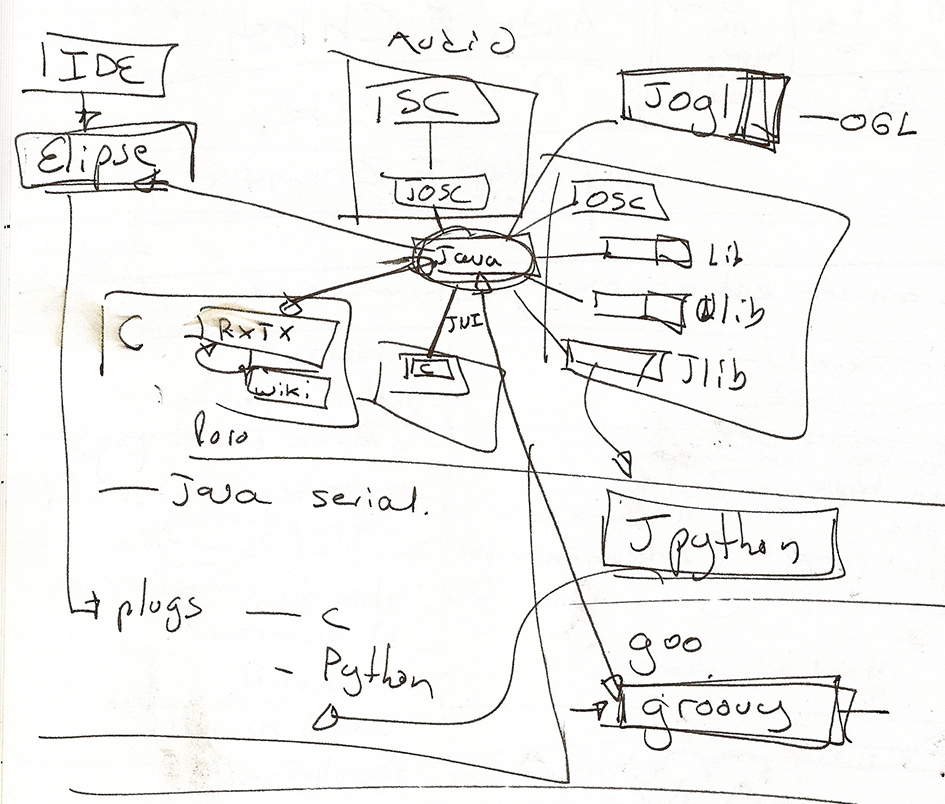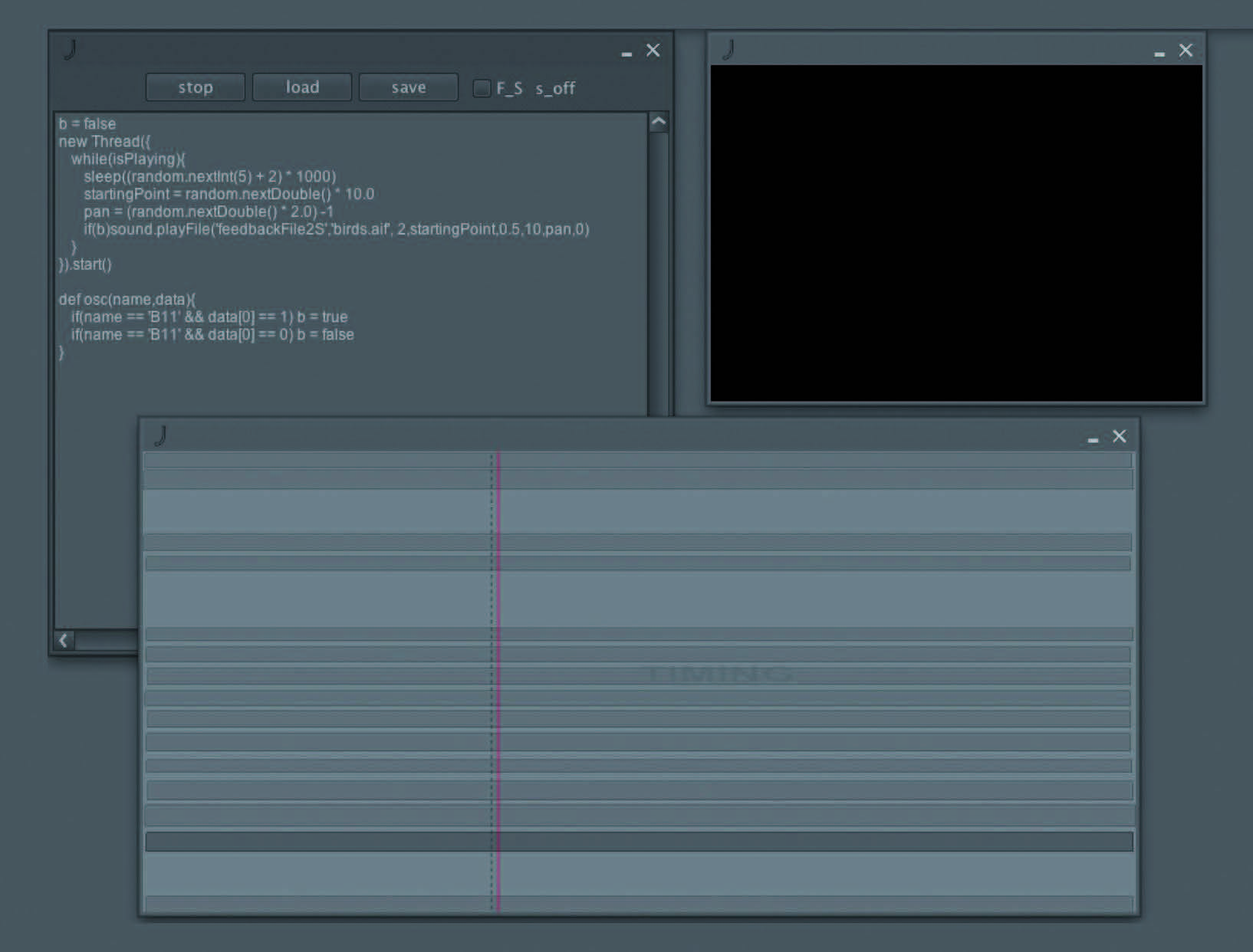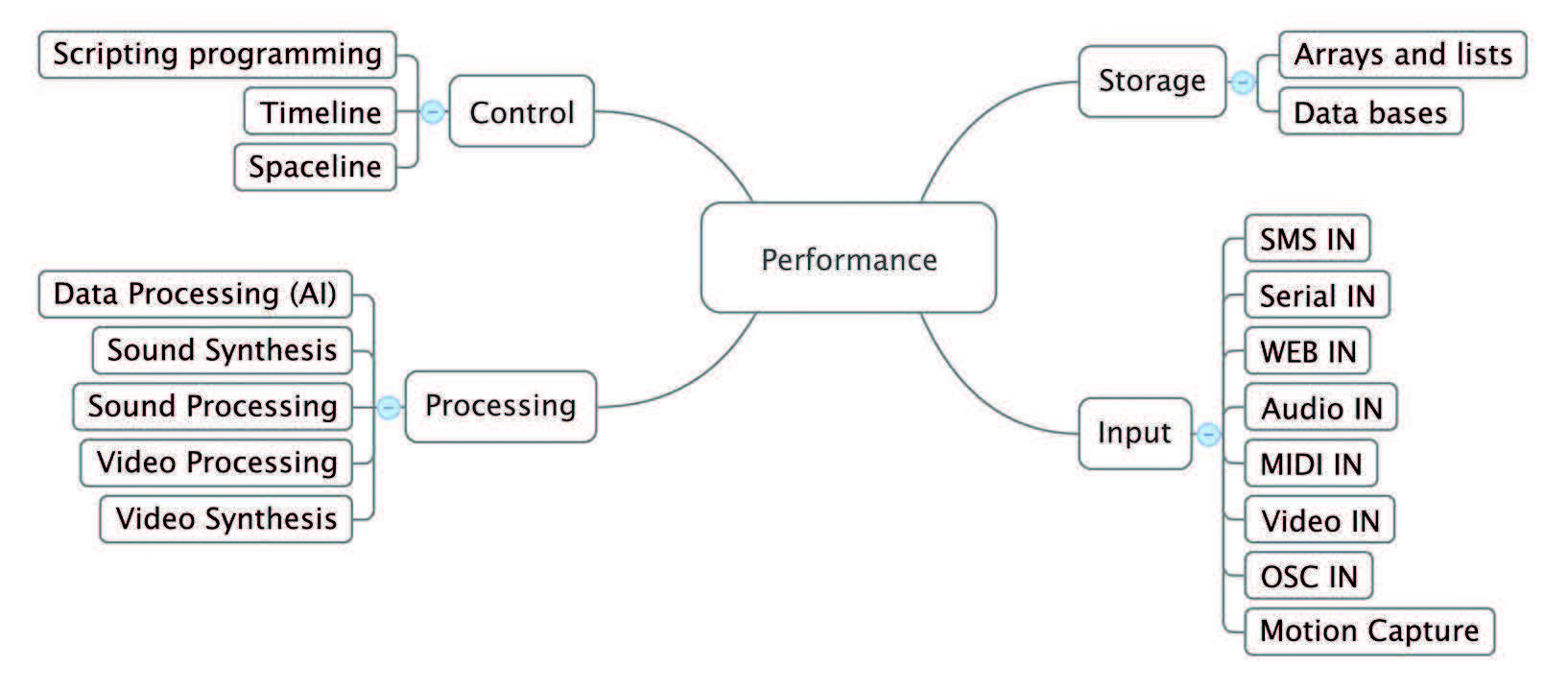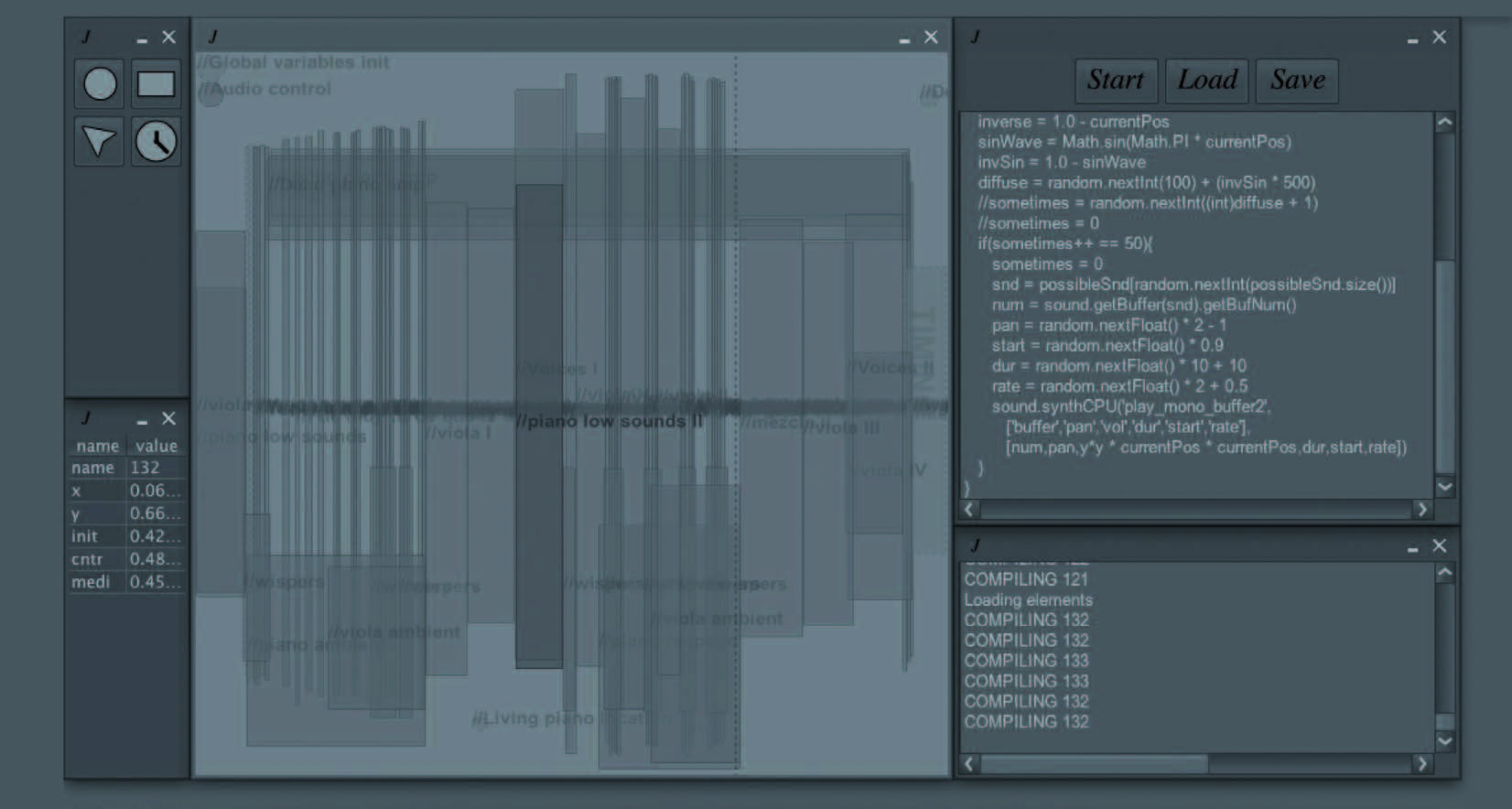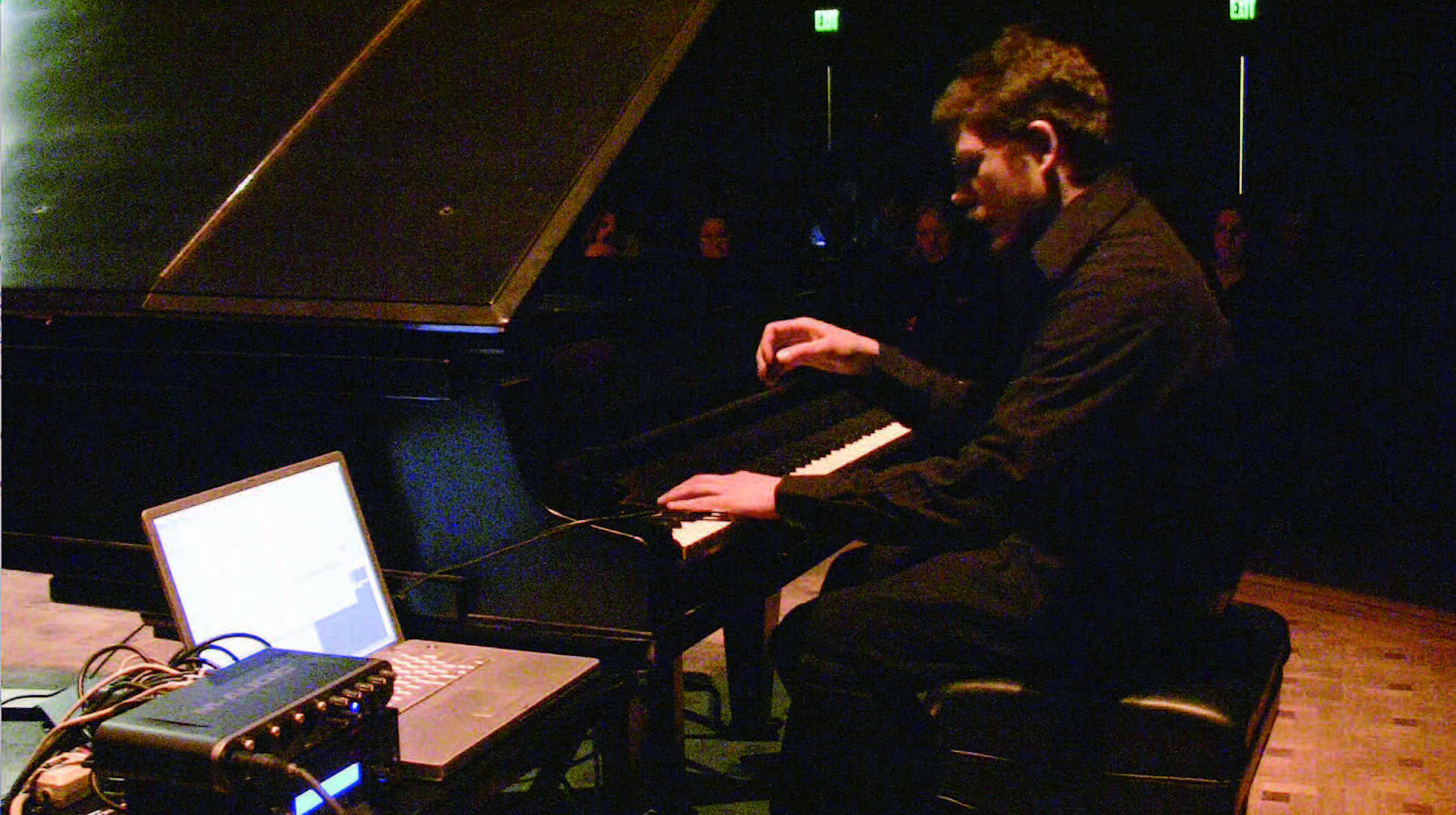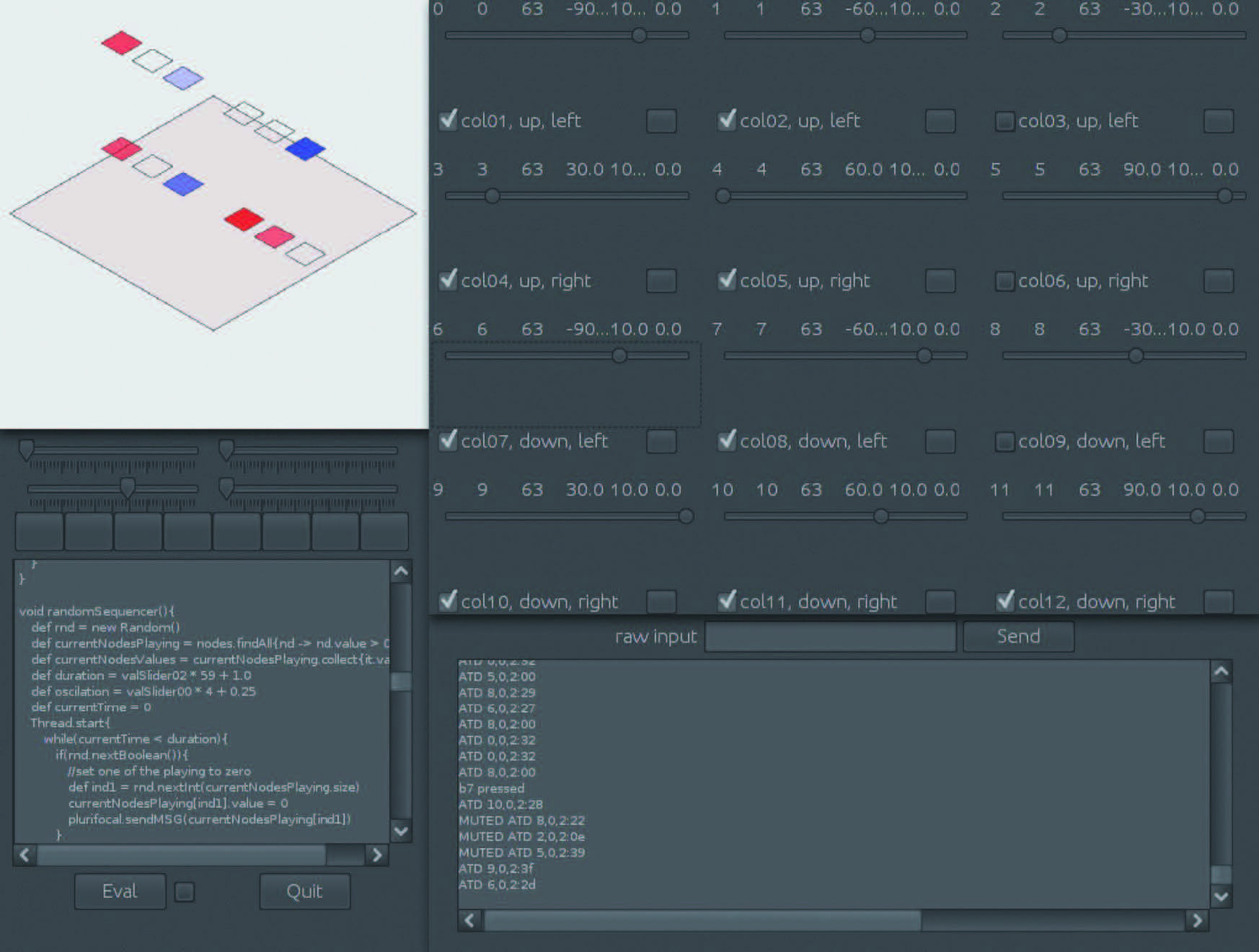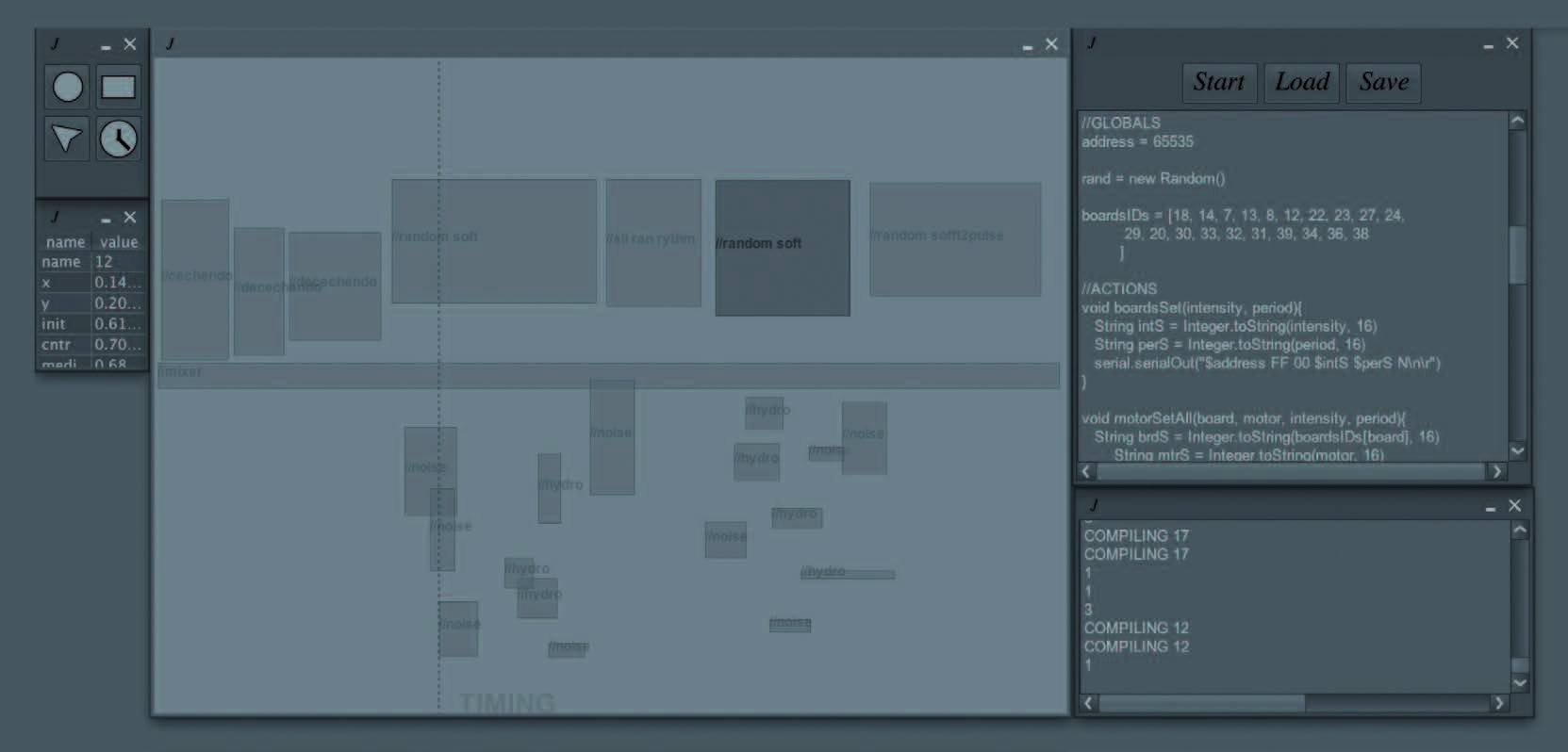Juum
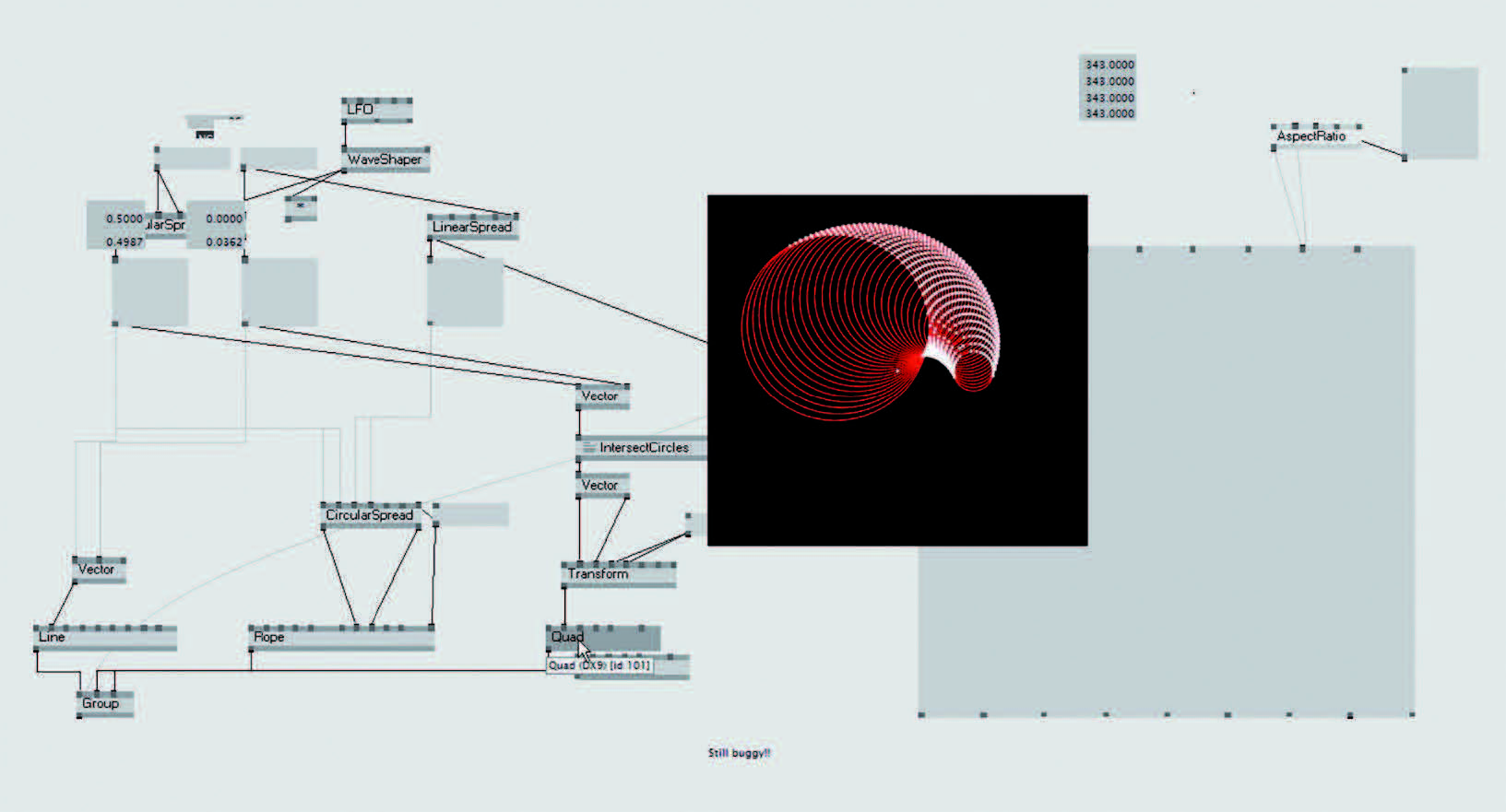
Juum is a piece of software developed by me as a personal solution to organize and compose audio and audiovisual works of art. This compositing environment has been heavily inspired by the Field software (http://openendedgroup.com/field) created by Marc Downie. Juum is written in the Java programming language and makes extensive use of open-source libraries. The software contains several modules to retrieve, organize, and access external information. It has audio, video, midi, OSC, serial, and video modules that allow the input, output, and transformations of various types of data. It also has methods for accessing and analyzing web pages, interacting with SMS phone messages, and analyzing Motion Capture files. Juum has a database where all data can be stored and retrieved if necessary.
Juum allows the easy and intuitive organization of temporary behaviors. These behaviors are conceived as short pieces of code in which sonic control events, visual events, and hardware control events are described algorithmically and programmatically. Each of these behaviors (code snippets) is encapsulated in a geometric shape that can be manipulated in a timeline and space-field area. Each of these snippets is written in a condensed scripting language, which allows for agile and dynamic programming. Users can interact with the Juum software in two ways: placing and distributing the geometric objects on the time/spaceline, and writing code for each of the individual graphic objects. The language used to write the code of the objects is Groovy, this is a scripting language with features like closures and constructors and dynamic types that make it agile and compact. It is an ideal choice for developing small code snippets where variable declarations or type checks are not required.
Graphically, the software is organized into five windows. The largest central window is the time and spaceline. This is where objects are added, edited, and moved to organize the composition. The area functions simultaneously as a timeline where a red vertical line moves from left to right during the progress of the piece and also as a two-dimensional space where the location of the elements creates spatial relationships between the circular elements. In its timeline function, the actions of each box are only active as long as the timeline intersects the object. The first moment of intersecting the graphic object is called the start function; during its passage, a loop function is executed and at the end, an end function is executed. It also has a tool palette, a console window, and an information window which provides details about the time/space location of each element, if desired two additional windows can be generated: the video window and the window of the canvas.
In my artistic projects, I have used the Juum software in various presentations and projects and now it is an integral part of the solo improvisations I do for piano and electronics. Some of them have been: the Seattle Latin American Music Festival; in the composition, production and presentation of the CD of the Duo Juum Vértice; in piano and electronic improvisation during a DXARTS concert at the University of Washington; at the Pixilerations Festival in Providence and on digital sheet music for artistic works such as Axial, Conjuro de la memoria, Just a minute, among others.
